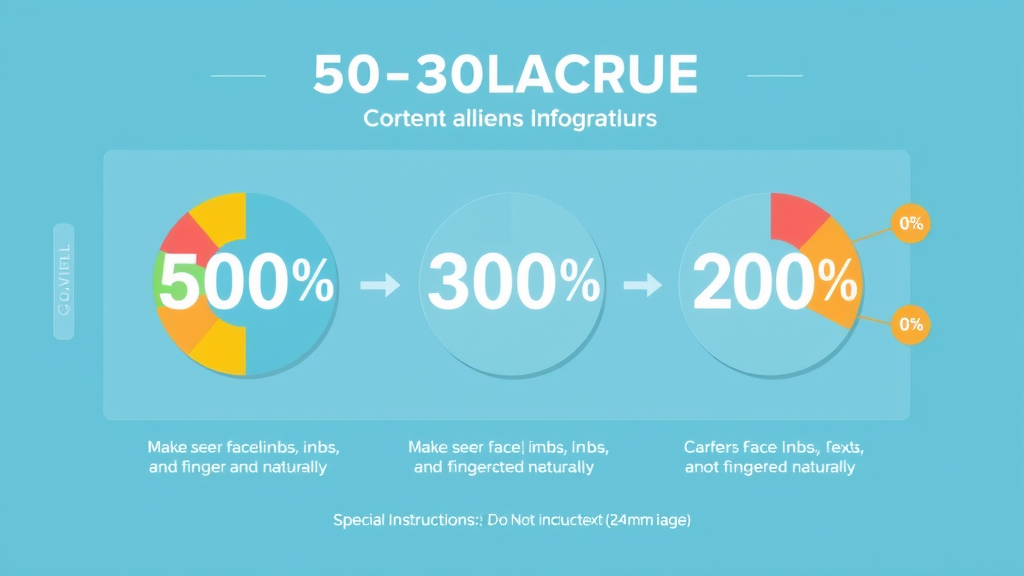Did you know that over 75% of businesses credit a solid social media content strategy for skyrocketing their brand awareness and engagement? In today’s digital-first world, simply posting content isn’t enough—having the right plan that combines strategic thinking, creativity, and data-driven insights is what separates leaders from the rest. If you want to stand out in a crowded media market and consistently achieve your marketing goals, this guide delivers everything you need: proven frameworks, actionable steps, emerging trends, and expert answers to the most frequently asked questions.
Why an Effective Social Media Content Strategy Is Critical Today
- Over 75% of businesses credit social media content strategies for increased brand awareness and engagement. Discover why building the right social media content strategy is key to market leadership.
An effective social media content strategy isn’t a luxury—it’s a necessity in today’s hyper-connected media market. With millions of posts generated daily across every major platform, brands must deliver not just frequent, but targeted and engaging social content to make an impact. The right strategy can amplify your brand voice, increase audience engagement, and drive impressive growth in the social media space. More than just a publishing schedule, a successful social media content strategy aligns with your overall marketing goals and serves as a bridge between your business objectives and your audience’s needs. Whether aiming to generate leads, build loyalty, or foster a community, implementing a comprehensive plan ensures your message doesn’t get lost in the shuffle. As the media marketing landscape evolves, mastering strategic content delivery is how brands maintain competitive advantage.

Defining Social Media Content Strategy: Foundations and Objectives
A strategic approach to social media content bridges the gap between audience expectations and business objectives.
What is a Social Media Content Strategy?
A social media content strategy is an organized plan that determines what, when, how, and why a brand shares content across various social media platforms. At its core, it’s a blueprint that guides everything—from the types of content you post and the channels you choose, to how you respond to trends in the media market. Rather than relying on spontaneous posting, a strong content strategy pinpoints your target audience , defines your brand voice, and connects your content with concrete marketing strategy objectives. By building a strategy that aligns with your marketing goals, you create a seamless path for developing media content that truly engages and converts. This approach not only maximizes reach and visibility but also optimizes your social media management efforts for sustainable long-term success.
Key Components of a Successful Social Media Content Strategy

To develop a winning social media content strategy , several essential elements must work in harmony. Setting clear goals ensures you’re moving in the right direction, while understanding your target audience allows you to deliver social content that resonates. Choosing the right mix of content types —videos, images, stories, or live streams—ensures your presence stands out on every social media platform. Alongside a consistent content calendar , robust workflows and smart media management practices ensure nothing falls through the cracks. Each element is vital to maximizing engagement, optimizing performance, and achieving your overarching marketing goals.
Setting Social Media Goals Aligned with Overall Marketing Strategy
Every effective content strategy starts with goal-setting . Identify what you want to accomplish—such as brand awareness , increased website traffic, or more leads—and ensure these goals fit seamlessly with your broader marketing strategy . By making goals measurable, like aiming for a 20% increase in follower engagement or doubling monthly leads, tracking progress and refining your approach becomes straightforward. Remember, your social media goals should support your overall business objectives. When your objectives are aligned, your social media content becomes a true extension of your business strategy rather than an afterthought. This connection enables a brand to accurately measure the impact of each post, campaign, or piece of media content over time.
Identifying and Understanding Your Target Audience
Knowing your target audience is core to crafting high-performing social media content . Use audience research and analytics to build detailed buyer personas —demographics, interests, challenges, and online behaviors. This deep understanding allows you to tailor your content types and voice, making sure your messaging hits home every time. Social media platforms offer useful insights into who’s most engaged with your content. Analyzing this data is crucial for refining your approach and responding to trends in the social media market . Successful brands create a two-way dialogue, actively listening and pivoting content as audience preferences in the media market evolve.
Choosing the Right Media Content and Content Types
Different social media platforms require different content types to thrive. For instance, visually-driven platforms like Instagram and TikTok succeed with high-impact images and videos, while LinkedIn favors thought leadership articles and industry insights. Evaluating which content type matches both your marketing goal and your audience’s habits is key to success. Experimenting with a range of media content—including stories, polls, user-generated content, and live sessions—can reveal what garners the most engagement. Always assess analytics to discover which kinds of social content spark the best response.
Developing a Consistent Content Calendar
Consistency fuels brand recognition and engagement. A well-structured content calendar makes it easy to balance content types, maintain frequency, and align messaging with marketing campaigns or seasonal events. Not only does a content calendar streamline social media management, but it also ensures your team is on the same page—eliminating last-minute scrambles and preserving brand voice. Incorporate recurring topics, monthly themes, and important dates to maximize variety and relevance. Use planning tools or templates to visualize your posting schedule across each major social media platform .
| Platform | Monday | Wednesday | Friday |
|---|---|---|---|
| Story + Carousel | Video Reel | Behind-the-Scenes Image | |
| Blog Share | Live Q&A | User-Generated Content | |
| Industry Article | Infographic | Team Culture Post |
Analyzing the Social Media Market to Inform Content Strategy
To stand out in the competitive social media market , you need to understand both the landscape and your position within it. This means routinely conducting audits, studying competitors’ social content, and researching evolving audience preferences. Thorough analysis helps brands pinpoint gaps in their media strategy, identify new content opportunities, and respond to real-time trends in media marketing . Whether you’re launching a new channel or refreshing your approach, examining both macro-level trends and micro-level performance will drive a more effective social media content strategy.
Conducting a Social Media Audit

Begin by taking inventory of your social media platforms : what’s working, what’s lagging, and which content types drive positive results. Assess your brand voice, frequency, reach, and how well your current content aligns with your overarching marketing goals . Leverage native insights and third-party analytics tools to examine audience demographics, engagement levels, and top-performing media content. A robust audit also uncovers overlooked opportunities—such as underutilized platforms or new content types—that can boost your media strategy.
Understanding Competitor Media Content and Social Content
Competitive analysis is essential for benchmarking your social media content strategy . Study at least three direct competitors in your media market: what types of social content are they posting, how often, and which content types attract the most engagement? Note how competitors express their brand voice, leverage trends in media marketing, and interact with their communities. Learning from both their wins and mistakes sharpens your own approach—helping you craft a differentiated and effective social content plan.
Researching Audience Preferences in the Media Market
The media market—and the behaviors of your target audience—are always evolving. Use social listening tools and surveys to identify what topics, media content formats, or digital events get people talking. Map out how your buyers interact with different content types to meet changing needs. Conducting ongoing audience research ensures that your content strategy stays relevant, and helps you adjust as audience interests or major platform algorithms shift.
Developing a Social Media Content Strategy: Step-by-Step
Crafting an effective social media content strategy requires a step-by-step approach that ensures thorough coverage of your audience’s needs and your own business objectives. This process weaves together the essentials: clear goals, audience understanding, platform-specific planning, streamlined media management, and continuous optimization. Let’s break down each step with actionable guidance and proven frameworks.
Step 1: Set Measurable Goals and KPIs
Begin by determining what success means for your brand. Align your content strategy with both marketing goals and desired outcomes—brand awareness, lead generation, or conversion. Set clear KPIs like engagement rate, follower growth, website clicks, or social media-driven sales. Measurable goals help you stay focused, justify resource allocation, and enable continual improvement of your social media strategy. Regularly revisit and update your KPIs to stay responsive in a dynamic social media market.
Step 2: Profile Your Target Audience
Build a multi-dimensional picture of your target audience using internal analytics, social listening, and external research. Develop buyer personas —fictionalized but data-driven profiles that reflect real needs, preferences, and motivations. The more refined your profiles, the easier it becomes to tailor social content and select the best content types for each platform, boosting effectiveness at every stage of your media strategy.
Step 3: Content Type Selection For Each Social Media Platform

Every social media platform has unique strengths and audience behaviors. Choose content types that play to these advantages—short-form video for TikTok and Reels, live events on Facebook, Q&As or document uploads on LinkedIn. Test multiple formats and evaluate performance to refine your content selection. The ultimate goal: deliver engaging and relevant media content that nurtures audience engagement and nurtures the customer journey.
Step 4: Planning a Multi-Platform Content Calendar
Structure your media content calendar for multiple platforms, building in flexibility for both evergreen topics and real-time trends. This improves consistency and efficiency in your social media management. Use scheduling tools and templates to assign posting dates, formats, and responsible team members. A robust social media content calendar prevents gaps in posting and ensures your strategy stays aligned with evolving marketing goals.
Step 5: Establishing Media Management and Social Media Management Workflows
- Hootsuite
- Buffer
- Sprout Social
- Later
- Loomly
- CoSchedule
- Agorapulse

Streamlined media management workflows eliminate bottlenecks and enhance collaboration. Assign clear roles for content creation, approval, scheduling, and engagement. Leverage dedicated social media management tools (see above) for automation, publishing, and performance tracking. The right workflow improves efficiency, keeps your team accountable, and enables real-time adjustments in response to analysis—all critical in fast-paced social media marketing.
Step 6: Optimize Content for Engagement and Reach
Go beyond basic posting by continuously optimizing for maximum engagement and reach. Analyze which topics, tones, visuals, and posting times resonate best with your target audience . Experiment with calls-to-action, hashtags, and interactive content types like polls or quizzes. Reviewing and acting on analytics insights allows you to fine-tune your content strategy in alignment with trends in the media market .
Step 7: Track, Analyze, and Refine Your Social Media Strategy
Regularly review KPIs and platform analytics to gauge the effectiveness of your social media content strategy . Identify what’s driving success and incorporate feedback or data-driven insights into your future strategy iterations. This iterative approach ensures your content strategy remains agile and responsive, capable of thriving even as social media marketing trends rapidly evolve.
| Metric | What It Measures |
|---|---|
| Engagement Rate | Likes, shares, comments per post |
| Reach | Number of unique viewers per content/formats |
| Conversion Rate | Clicks leading to desired action (e.g., sign-ups, purchases) |
| Follower Growth | Increase in fans/subscribers over time |
| Referral Traffic | Traffic brought directly to your website from social media platforms |
| Share of Voice | Your mentions compared to competitors in the media market |
Popular Social Media Content Types and Trends
Exploring Content Types: Video, Images, Stories, Live Streams, & More
Today’s social media market is driven by a diversity of content types . Video, in particular, maintains high engagement across Instagram, Facebook, TikTok, and YouTube. Stories, reels, and live streams generate real-time connection and urgency, while static images and infographics clarify complex topics in quick, visual ways. Complement your strategy with a mix of interactive posts (polls, quizzes), behind-the-scenes images, and user-generated content. Diversifying media content types helps you reach more segments of your target audience and adapt quickly to each platform’s algorithm.
- Short-form video (Reels, TikTok, YouTube Shorts)
- Stories (Instagram, Facebook)
- Live streaming events (Facebook Live, YouTube Live, Instagram Live)
- Carousel posts (Instagram)
- User-generated content and reviews
- Polls and interactive Q&As (Twitter, Instagram, LinkedIn)
- Infographics & educational guides
"Content strategy is not just about the message—it's about delivering value in the format your audience craves."
Emerging Trends in Social Media Marketing and Content Creation

New trends in social media marketing constantly reshape best practices. Leveraging AI-powered content creation, influencer partnerships, shoppable media content, and short-form storytelling are just a few trends gaining traction. Augmented Reality (AR), vertical video, and voice-driven posts also continue to rise in popularity. Today’s most forward-thinking brands actively experiment with emerging formats, embrace cross-channel storytelling, and monitor data for quick pivots—ensuring their media strategy adapts to fast-moving audience preferences in the social media market .
The 50-30-20 Rule and the 5-5-5 Rule for Balanced Media Content
Understanding the 50 30 20 Rule for Social Media

The 50-30-20 rule is a popular framework for distributing media content : spend 50% on original, brand-building posts, 30% on curated or shared industry content, and 20% on promotional or direct sales material. This balanced approach ensures your social media content maintains value, relevance, and authenticity in the eyes of your followers. Using this rule helps brands avoid over-promoting, which can cause audience fatigue, while ensuring they still drive toward business objectives in their overall content strategy.
Applying the 5 5 5 Rule: Variety in Social Media Content Mix
The 5-5-5 rule expands on this idea by encouraging a varied approach within your social media strategy : for every 5 posts about your brand, share 5 posts related to your industry or audience’s interests, and 5 community or engagement-focused posts (like Q&As or contests). This pattern pushes brands to step outside promotional comfort zones and prioritize relationship-building social content. The result is a well-rounded feed that nurtures trust and increases meaningful audience engagement.
| Framework | Brand Content | Industry/Curated Content | Promotional/Engagement Content |
|---|---|---|---|
| 50-30-20 | 50% | 30% | 20% |
| 5-5-5 | 5 posts | 5 posts | 5 posts |
Best Practices for Social Media Content Strategy Success
- Define clear objectives and KPIs for every campaign
- Know your target audience and refresh buyer personas regularly
- Maintain a balanced content calendar and adapt quickly to trends
- Repurpose high-performing media content across multiple media platforms
- Encourage audience interaction with CTAs, polls, and contests
- Track analytics and measure against goals frequently
- Use professional media management tools for scheduling and reporting
- Stay consistent with your brand voice and visual identity
Tips for Effective Social Media Content Management
Effective social media content management is about maintaining consistency, responding rapidly to changes, and optimizing workflow. Set aside time weekly for content planning, leverage automation for routine posts, and foster an approval system for quality control. Encourage your team to monitor trends, test new content types , and document best practices for ongoing improvement. Don’t forget to continually revisit and revise your content based on analytics. Prioritize what delivers value for your audience and align your efforts tightly with your brand’s mission and overall business goals.
The Role of Media Management in Streamlining Workflows

Strong media management underpins every successful social media strategy . Use scheduling and analytics tools to automate repetitive tasks and alleviate bottlenecks. Centralizing content, approvals, and metrics streamlines collaboration, empowers faster decision-making, and ensures your team operates at optimal efficiency. Robust workflows not only boost productivity but also minimize the risk of missed opportunities, helping your brand maintain a consistently strong presence in the ever-evolving social media market .
"Consistency beats intensity: Loyal followings are built one quality post at a time."
Case Studies: Effective Social Media Content Strategies in Action
Media Content Strategy for Brand Awareness
A leading eco-friendly beauty brand revamped their social media content strategy by focusing 70% of their posts on sustainability education. By partnering with micro-influencers and using video-heavy content types across Instagram and TikTok, they saw a 42% jump in brand awareness within six months. Their success proves the impact of aligning content with audience values and market trends.
Leveraging Social Media Marketing for Lead Generation
A B2B software company used LinkedIn’s carousel and native video posts to deliver industry insights and practical demos. Coupled with a data-driven content calendar, they improved lead capture by 37% quarter-over-quarter. Regularly sharing curated social content and offering live Q&A sessions helped nurture cold audiences into warm prospects.
- Glossier: Known for leveraging user-generated content and interactive stories to spark engagement
- Wendy’s: Viral tweets and brand voice that set the standard for personality-driven content
- HubSpot: Consistent use of educational guides and branded infographics across media platforms

Frequently Asked Questions: Social Media Content Strategy
What is a social media content strategy?
A social media content strategy is a comprehensive plan for creating, publishing, and managing media content on social media platforms to achieve specific business goals. It covers content types, posting schedules, audience targeting, and performance analysis for continuous improvement.
What is the 50 30 20 rule for social media?
The 50-30-20 rule guides content distribution: 50% should be original brand content, 30% curated industry resources, and 20% promotional offerings. This balance ensures your feed provides value while driving business objectives.
What is the 5 5 5 rule on social media?
The 5-5-5 rule encourages brands to post 5 pieces of original content, 5 industry or customer interest posts, and 5 community or interactive posts—promoting diverse, engaging social content and nurturing audience relationships.
What are the 7 steps in creating a content strategy?
The seven steps are: 1) Set measurable goals, 2) Define your target audience, 3) Choose content types for each platform, 4) Plan a content calendar, 5) Establish media management workflows, 6) Optimize for engagement, and 7) Track and refine your strategy.
Quick Reference: What You’ll Learn from Social Media Content Strategy Mastery
- Understand essential social media content strategy components
- Learn frameworks (50-30-20, 5-5-5) for balanced content
- Explore tools, best practices, and emerging trends
- Access real-world examples and actionable strategies
People Also Ask: Key Questions about Social Media Content Strategy
- What is a social media content strategy?
- What is the 50 30 20 rule for social media?
- What is the 5 5 5 rule on social media?
- What are the 7 steps in creating a content strategy?

Expert Video: Visualizing a Winning Social Media Content Strategy
Comprehensive Walkthrough Video: Building Your Social Media Content Strategy Step-by-Step
Tactical Explainer Video: Social Media Content Types & Scheduling Best Practices
Take the Next Step with Your Social Media Content Strategy
Ready to grow your business? Book your free Marketing Strategy Session or call 562-620-7576 today.
Embed these actionable social media content strategy steps, experiment with emerging content types, and watch your audience and brand grow!
To enhance your understanding of building an effective social media content strategy, consider exploring the following resources:
- “Social Media Content Plan: Essential Steps for Success in Digital Marketing” ( brandwatch.com )
This article provides a comprehensive guide on creating a social media content plan, covering aspects such as goal setting, audience research, content calendar development, and performance tracking.
- “How to Develop a Successful Content Strategy for Social Media” ( adaglobal.com )
This resource outlines key steps to create a successful social media content strategy, including defining objectives, conducting audience research, performing competitive analysis, and choosing the right platforms.
These resources offer valuable insights and practical steps to help you craft a social media content strategy that drives results.
 Add Row
Add Row  Add
Add 




Write A Comment